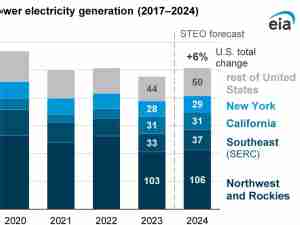California oil spill takes toll on marine mammals, birds
By: Reuters | May 26 2015 at 09:04 PM
LOS ANGELES - More than two dozen marine mammals and nearly 40 birds, most of them pelicans, have been collected dead and alive from along California’s oil-fouled coastline near Santa Barbara in the week since a petroleum pipeline ruptured there, wildlife officials said on Tuesday.
Of 38 oil-coated birds documented so far, 13 turned up dead and 25 were picked up alive, though two of the rescued birds have since died, said Dr. Michael Ziccardi, a veterinarian from the University of California, Davis, who heads the Oiled Wildlife Care Network.
The surviving birds, primarily brown pelicans, were all being taken to a wildlife care facility in Los Angeles to be cleaned up, nursed back to health and hopefully released again to the wild.
Among marine mammals counted as apparent oil spill victims, 12 California sea lions and six northern elephant seals were recovered alive, but two of the captured sea lions later died. Five more sea lions were found dead, along with carcasses of three common dolphins, Ziccardi said.
The same tallies of marine mammal and bird casualties were reported by Mary Fricke, a spokeswoman for the California Department of Fish and Wildlife.
Post-mortem exams must be conducted on all the dead animals to confirm whether they actually perished from petroleum exposure, officials said. Results from the first dolphin exam were inconclusive as no visible signs of oil contamination were found externally or internally, Ziccardi said.
The full extent of damage to wildlife remains unknown since last Tuesday’s pipeline rupture dumped as much as 2,400 barrels (101,000 gallons or 382,327 liters) of crude oil onto the shoreline and into the ocean west of Santa Barbara.
The spill left an oil slick stretching for more than 9 miles (14.5 km) along the coast and forced the indefinite closure of two popular beaches. The area also has been placed off-limits to fishing and shellfish harvesting.
The stricken region lies at the edge of a national marine sanctuary and underwater preserve that is home to whales, dolphins, sea lions and other marine mammals, along with some 60 species of sea birds and over 500 species of fish.
Rescued marine mammals were being sent to SeaWorld San Diego for cleansing and rehabilitation by veterinary staff there.
“Our team is working very, very hard, doing everything they can to give these animals a second chance at life,” said David Koontz, a spokesman for the marine theme park.
He said it generally takes a number of days for crews to fully clean each animal, painstakingly scrubbing them with toothbrushes and a special degreasing soap.
Sea lions were already reported to be under stress well before the spill, with record numbers - more than 3,100 so far this year, most of them pups - washing up starving and stranded on Southern California beaches. Biologists have linked the mass strandings to warming ocean temperatures that have disrupted the pinnipeds’ usual food supply.
The week-old oil spill ranks as the biggest to hit the ecologically sensitive shoreline northwest of Los Angeles since a 1969 blowout dumped up to 100,000 barrels (4.2 million gallons or 15.9 million liters) of oil into the Santa Barbara Channel.
That much larger spill killed thousands of sea birds and other wildlife and helped spark the modern U.S. environmental movement.








